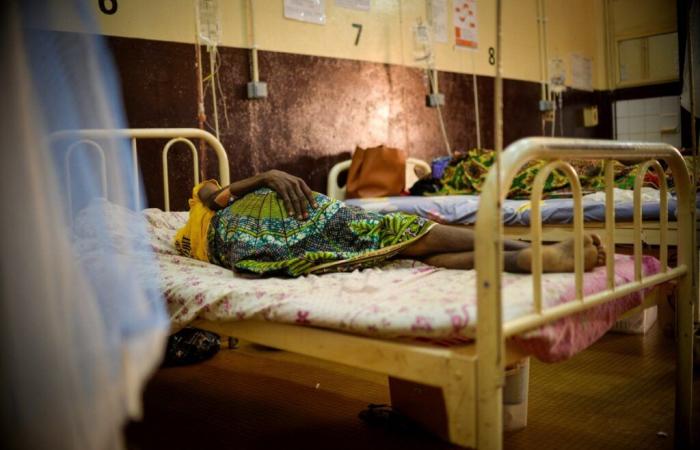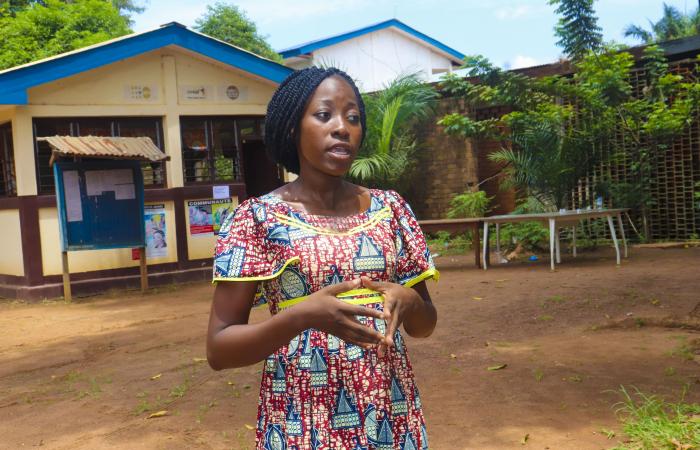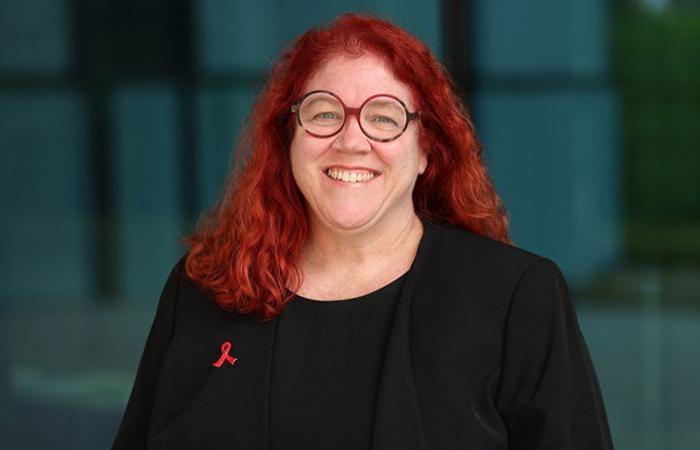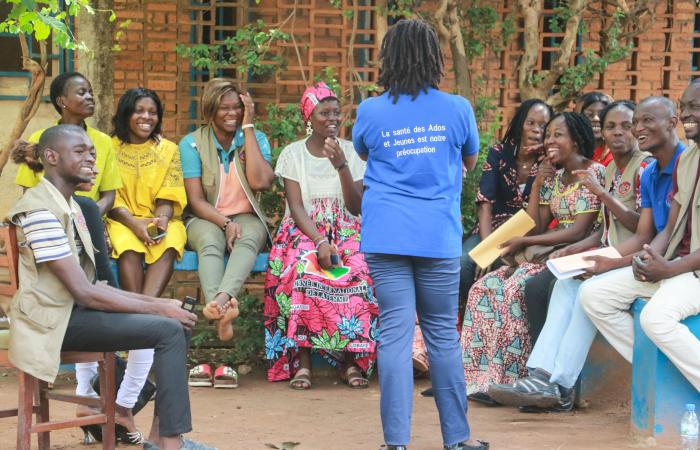A patient with advanced AIDS on her bed at the community hospital in Bangui, January 27, 2022.
AFP
The AIDS virus is still present in a large part of sub-Saharan African countries. It mainly affects girls and young women. Climate change and conflict dominate the United Nations agenda, but there is a need to redouble efforts in the fight against HIV, UNAIDS warns.
This content was published on
November 05, 2024 – 09:03
Gniwali Ndangou lives in Bangui, capital of the Central African Republic. She is an orphan. During her childhood, she was the only one of her siblings who had to take pills every day. According to his guardian, medication for malaria and headaches. It wasn’t until she was seventeen, when she threatened to give up, that her sister told her the truth: Gniwali was born with HIV.
Today, she works as a peer educator and community health worker at the Center for Information and Sexual Education for Youth (CISJEU). Which offers services provided by the local population. For example HIV tests and information to prevent infection. Adolescents and young adults living with the virus also receive peer support in taking medication and their treatment. Objective: avoid transmission of the disease.
Gniwali Ndangou.
UNAIDS
The center saved Gniwali’s life. It is a sign of hope for many young people forced to live with HIV. UNAIDS estimates that in sub-Saharan Africa, 3,100 girls and young women continue to be infected every week. They are three times more likely to be so than their male counterparts. UNAIDS is a joint program of eleven UN organizations, including WHO, UNICEF, UNESCO, UN Women and the World Bank.
The United Nations Sustainable Development Goals (SDGs) aim to eliminate AIDS as a public health threat by 2030. But given the infection rates in various parts of the world, UNAIDS is calling for alarm and calls for more support from both a medical and financial perspective.
Girls targeted by health policies
In eastern and southern Africa, HIV infection rates among girls aged 15 to 19 are almost six times those of boys the same age. Women between the ages of 20 and 24 are more than twice as likely to be infected as their male contemporaries. 86% of children born carrying the virus are in Africa.
“These striking figures show that we absolutely must prioritize girls and young women, particularly in sub-Saharan Africa,” Suki Beavers, Director of Equality and Rights for All at UNAIDS, in Geneva, explains to swissinfo.ch.
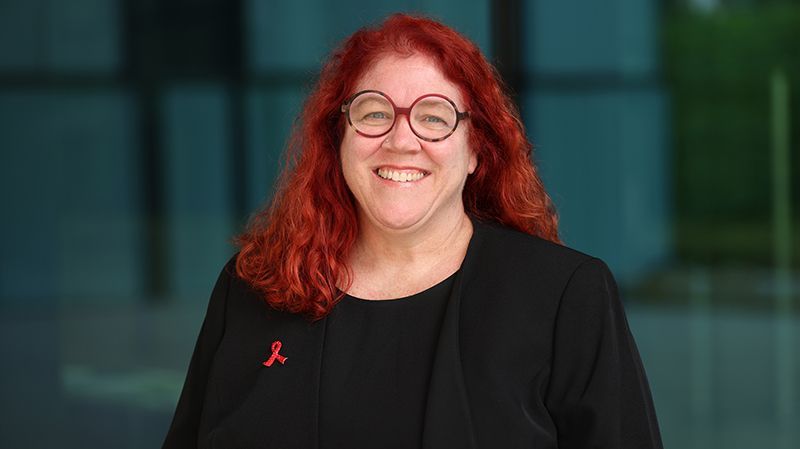
Suki Beavers.
UNAIDS
To explain these increased risks for women, Suki Beavers cites discrimination, lack of equality between the sexes, violence and poverty. Preventing HIV infection also requires that infected people are not stigmatized, discriminated against or criminalized, she emphasizes. “When people are afraid of being arrested while going to get medication, they are much less likely to initiate and continue treatment.” Uganda, for example, recently toughened its laws against homosexuals.
Strengthen prevention
Individual measures are not enough as a lasting response to HIV, UN organizations believe. They therefore adopt multisectoral approaches. “The fight against disease is as much a fight for justice and equality as it is a medical fight,” the executive director of the Global Fund to Fight AIDS, Tuberculosis and Malaria told the media in Geneva in September. , Peter Sands.
Suki Beavers notes this idea that communities living with HIV must be at the center of a sustainable response to HIV. Beyond girls and women, these include priority populations such as drug users, sex workers and men who have sex with men. For them, it would be a question of being able to control the implementation of objectives. Among them, the control by the communities themselves of 30% of tests and treatments and 80% of prevention measures.
But above all, UN organizations focus on education. “It has been shown that girls are less at risk of contracting HIV when they complete secondary school,” explains Suki Beavers. Each additional year that girls spend in school also means higher income afterwards. “That’s one of the things we should be focusing on.” For the specialist, changing behavioral norms is also a necessity. Particularly through raising awareness of male domestic violence.
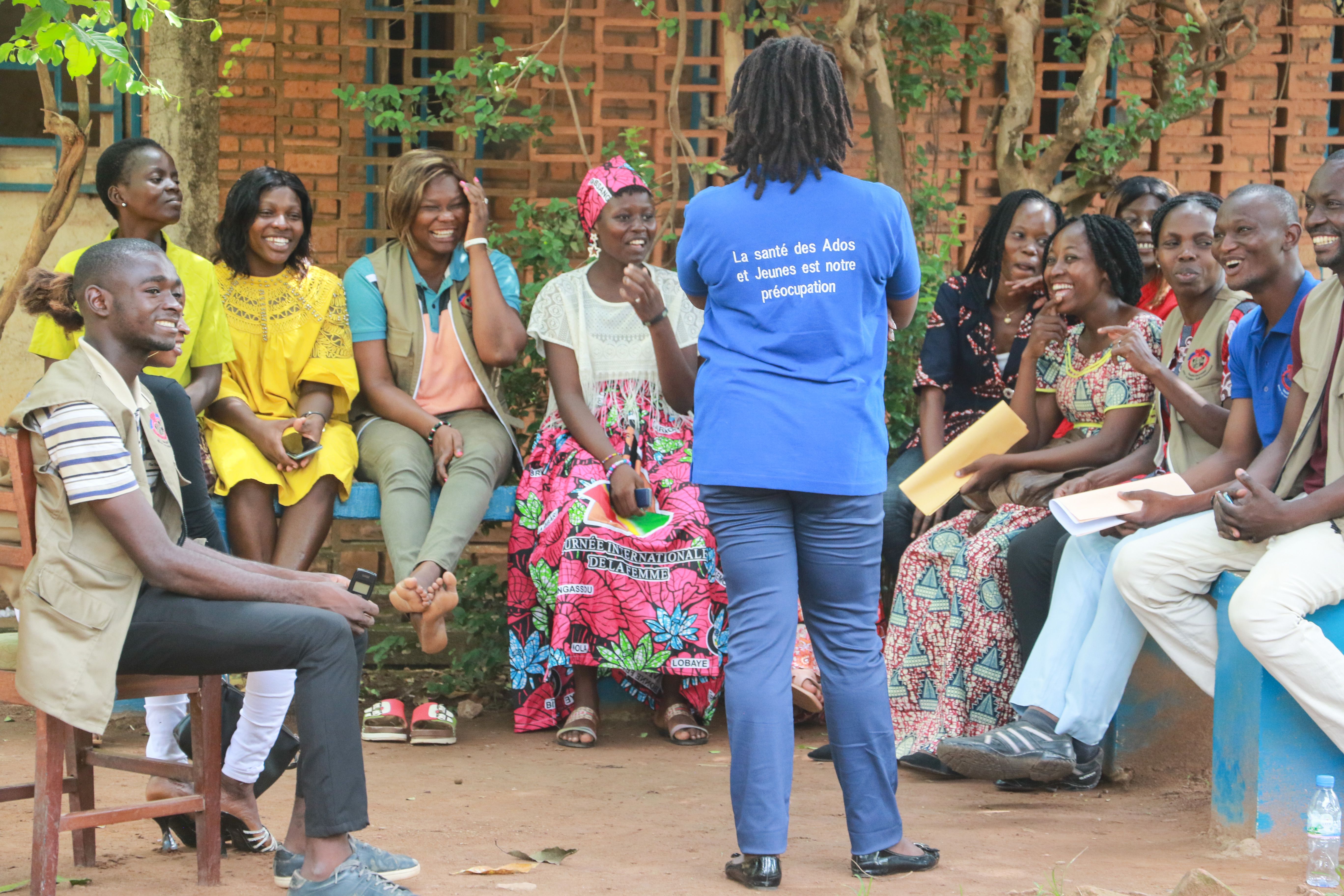
Information on AIDS prevention and possible treatments in the Central African Republic.
UNAIDS
As part of its “Education Plus” programme, which targets girls and young women in sub-Saharan Africa, UNAIDS works with governments and civil society to ensure young people can attend and complete secondary school free of charge. Especially pregnant students. Education and sport are the vectors for promoting equality between girls and boys as well as a climate free of violence. The concern is to prevent girls from being stigmatized because of HIV, pregnancy or rape. Additionally, laws requiring parental consent must be abolished to ensure young people have access to HIV prevention and treatment.
For an unconfirmed cost
The African Union (fifty-five member countries) supports the program and fifteen states participate concretely – Cameroon, Kenya, Malawi, Senegal, Sierra Leone, South Africa, Tanzania, Uganda and Zambia. Others are interested. But structural debt and the burden of interest greatly complicate the financing of this type of program for many African countries. According to UNAIDS, Angola, Kenya, Malawi, Rwanda, Uganda and Zambia currently spend more than half of their gross domestic product servicing debt.
A service that directly impacts the volume of funds available to these countries for programs dedicated to gender equality, human rights and education. So the rights of women and girls in their daily lives, explains Suki Beavers.
Get off the agenda
Of the approximately forty million people living with HIV in the world today, some twenty-six million are in sub-Saharan Africa. If the region has reduced new infections by 56% since 2010, this success is not sustainable with limited financial room for maneuver, notes UNAIDS in a report published in September. “HIV is no longer on the agenda,” laments Suki Beavers. Climate change and conflicts have relegated it to the background.
At the Future Summit in New York at the end of September and the United Nations General Assembly, UNAIDS reminded participants that HIV and AIDS are not a thing of the past. By 2025, $29.3 billion will be needed globally to combat virus transmission. UNAIDS calls on the international community to work to make medicine prices affordable.
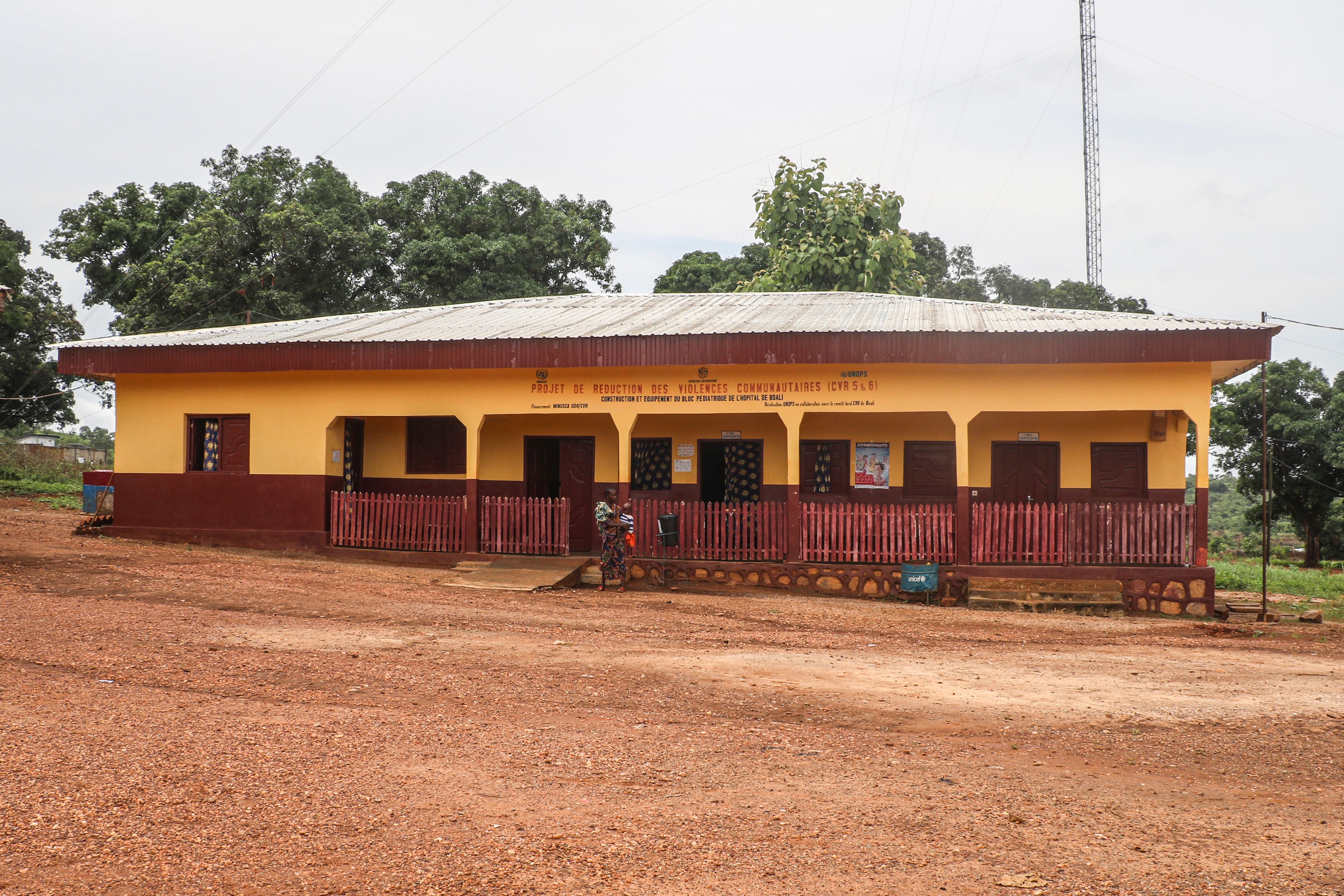
Boali Hospital, somewhere in the Central African Republic countryside, provides AIDS treatment.
UNAIDS
Current HIV medications require daily medication. However, a new treatment called Lenacapavir must only be administered every six months, by injection. With the advantage that girls and women no longer have to withdraw their medication periodically and in public in the clinic, at the risk of being stigmatized by those around them. But this new treatment is too expensive for these patients, says the director at UNAIDS. And the patents held by the big pharma companies prohibit the production of generics.
Development objectives
According to the United Nations Sustainable Development Goals (SDGs), the world should have no new HIV infections or new cases of AIDS by 2030. To achieve this, UNAIDS has set out several approaches. In particular the 95-95-95 strategy, focused on HIV testing and treatment.
A triple target: 95% of all people living with HIV will be aware of their infection by 2025. 95% of people diagnosed as carriers will obtain life-saving antiretroviral treatment. And 95% of people receiving this medication should no longer be contagious by 2025.
To achieve this, a complementary strategy aims to reduce social and legal barriers to the use of HIV-related services. Which should also guarantee that at least nine girls and nine women out of ten enjoy equal rights to men. And that they are not exposed to violence.
“The SDG commitment to ending AIDS as a public health threat by 2030 is achievable,” says Suki Beavers. But only if the political will and necessary funds are there. And whether the much-needed policy and programmatic changes are actually made.
Text reread and verified by Virginie Mangin, translated from English by Pierre-François Besson/op
Plus

Plus
Want to know more? Subscribe to our newsletter
Subscribe to our newsletter for the Fifth Switzerland and receive our best articles in your inbox every day.
read more Want to know more? Subscribe to our newsletter

